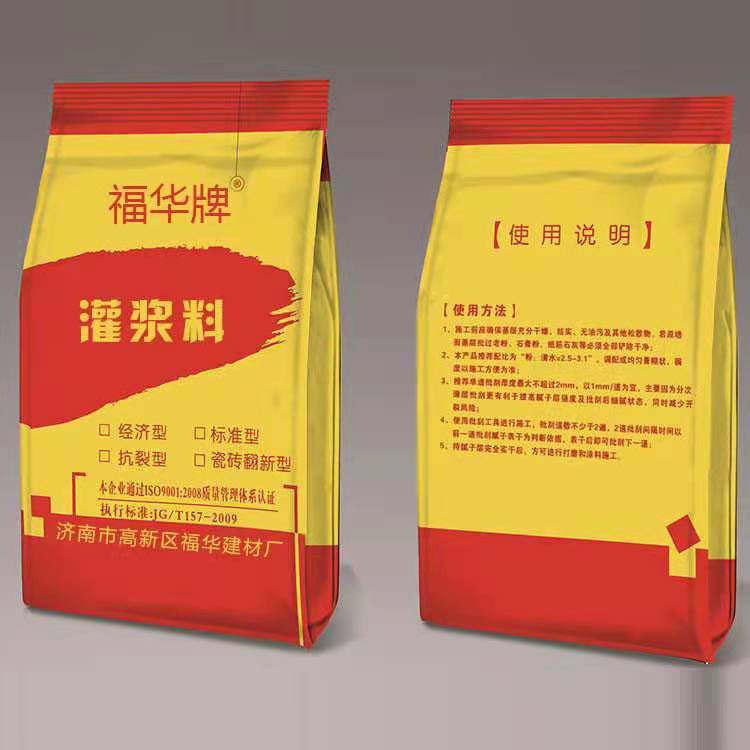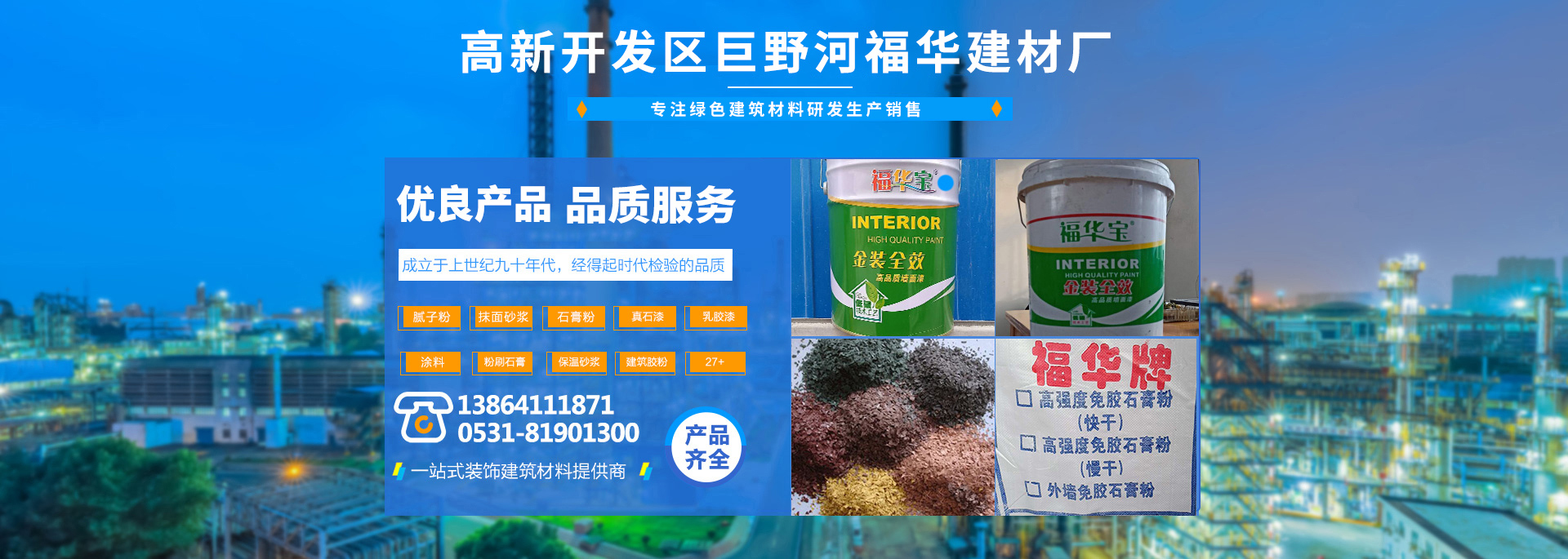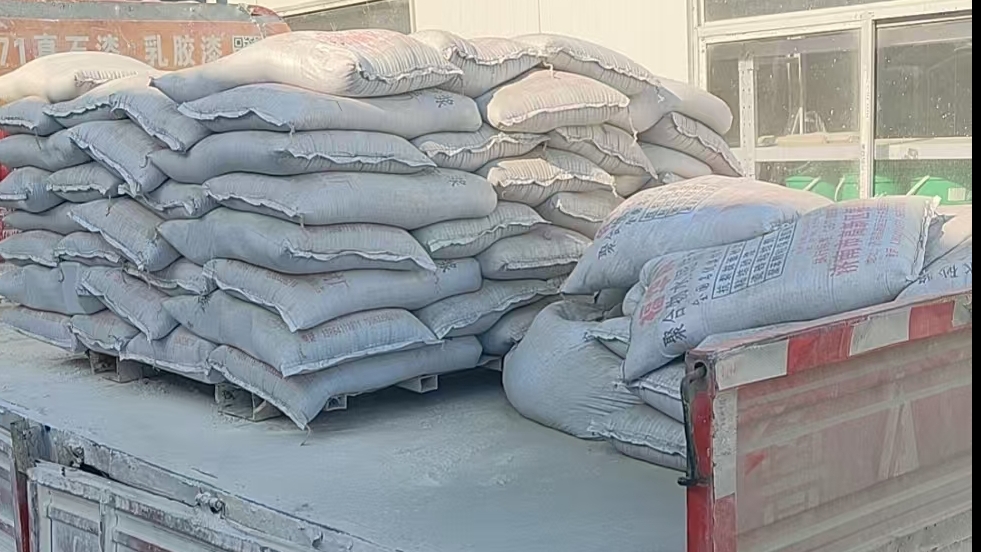濟南抹面砂漿施工有哪些注意事項?
來源:http://www.laodaohe.cc 日期:2025-07-14 發布人:
抹面砂漿施工質量直接影響墻體的平整度、強度及耐久性,施工過程中需注重細節把控,以下是具體注意事項:
The construction quality of plastering mortar directly affects the flatness, strength, and durability of the wall. During the construction process, attention should be paid to detail control. The following are specific precautions:
施工前的準備工作至關重要。首先需檢查基層狀況,基層表面應平整、堅實,無浮灰、油污、疏松物及空鼓現象,若存在這些問題,需提前處理 —— 浮灰用毛刷清理,油污用洗滌劑擦拭干凈,疏松部位需鏟除并重新修補,空鼓處需敲掉后用水泥砂漿填補。對于吸水率較高的基層(如黏土磚、加氣混凝土砌塊),施工前 1-2 天需澆水濕潤,使基層內部吸水飽和但表面無積水,避免砂漿水分被快速吸收導致干裂;而光滑的混凝土基層則需進行毛化處理,可涂刷界面劑或鑿毛,增強砂漿與基層的粘結力。
The preparation work before construction is crucial. Firstly, it is necessary to check the condition of the base layer. The surface of the base layer should be flat, solid, and free of floating ash, oil stains, loose materials, and hollowing. If these problems exist, they need to be dealt with in advance - floating ash should be cleaned with a brush, oil stains should be wiped clean with detergent, loose parts should be removed and repaired again, and hollowing areas should be knocked off and filled with cement mortar. For the base layer with high water absorption rate (such as clay bricks and aerated concrete blocks), it is necessary to water it 1-2 days before construction to ensure that the interior of the base layer is saturated with water absorption but there is no accumulated water on the surface, in order to avoid the rapid absorption of moisture in the mortar leading to drying and cracking; Smooth concrete base requires roughening treatment, which can be coated with interface agent or chiseled to enhance the bonding strength between mortar and base.
材料準備與調配需嚴格規范。抹面砂漿的配比應符合設計要求,通常由水泥、砂、摻合料及外加劑按比例混合而成,砂需選用潔凈的中砂或粗砂,過篩去除雜質和過大顆粒,含泥量不得超過 3%。調配時需采用機械攪拌,先將砂、水泥干拌均勻,再加入適量水攪拌至稠度適宜(一般手握成團、落地散開為宜),攪拌時間不少于 2 分鐘,確保砂漿質地均勻,無結塊。砂漿應隨拌隨用,從攪拌完成到使用完畢的時間不宜超過 3 小時(高溫天氣需縮短至 2 小時),避免因砂漿初凝影響粘結強度,嚴禁使用已初凝或加水重新攪拌的砂漿。
The preparation and allocation of materials must be strictly standardized. The ratio of plastering mortar should meet the design requirements, usually composed of cement, sand, admixtures and additives mixed in proportion. Clean medium or coarse sand should be selected, and impurities and oversized particles should be removed by sieving. The mud content should not exceed 3%. Mechanical mixing is required during mixing. First, dry mix the sand and cement evenly, then add an appropriate amount of water and mix until the consistency is suitable (generally, it is advisable to hold it in a ball and spread it on the ground). The mixing time should not be less than 2 minutes to ensure that the mortar texture is uniform and free of clumps. Mortar should be mixed and used immediately, and the time from mixing to use should not exceed 3 hours (shortened to 2 hours in high temperature weather), to avoid affecting the bonding strength due to the initial setting of mortar. It is strictly prohibited to use mortar that has already set or has been re mixed with water.
施工過程中的操作要點需牢記。抹面應分層進行,普通墻體通常分底層、中層和面層,每層厚度需控制在規范范圍內 —— 底層厚 5-7mm,主要起粘結作用;中層厚 7-9mm,用于找平;面層厚 2-3mm,負責平整裝飾。每層砂漿需待前一層凝結后(用手指按壓無明顯痕跡)再進行涂抹,避免因分層過厚導致空鼓、開裂。抹面時應用力均勻,先用抹子將砂漿攤平,再按由下而上、由左至右的順序壓實刮平,陰陽角處需用靠尺找直,確保方正順直。對于門窗洞口、管道穿墻處等易開裂部位,應在砂漿中埋入網格布或鋼絲網加強,網格布需鋪展平整,搭接寬度不少于 100mm。
The key points of operation during the construction process should be kept in mind. The plastering should be carried out in layers. Ordinary walls are usually divided into bottom layer, middle layer, and surface layer, and the thickness of each layer should be controlled within the specified range - the bottom layer is 5-7mm thick, mainly used for bonding; Middle layer thickness of 7-9mm, used for leveling; The surface layer is 2-3mm thick and is responsible for leveling and decorating. Each layer of mortar should be applied after the previous layer has set (pressing with fingers without obvious marks) to avoid hollowing and cracking caused by excessive layering. When plastering, apply even force. First, use a trowel to level the mortar, and then compact and scrape it in the order of from bottom to top and from left to right. Use a ruler to straighten the corners to ensure they are square and straight. For areas prone to cracking such as door and window openings, pipe penetrations, etc., grid cloth or steel wire mesh should be embedded in mortar for reinforcement. The grid cloth should be laid flat and the overlap width should not be less than 100mm.

環境因素對施工質量影響較大,需合理安排施工時間。抹面砂漿施工的環境溫度宜在 5-35℃,低于 5℃時易受凍害影響,需采取保溫措施;高于 35℃或風力較大時,砂漿水分蒸發過快,易產生干縮裂紋,需在施工后及時覆蓋保濕,必要時暫停施工。雨天不宜進行室外抹面施工,若施工中遇降雨,需立即停止作業并覆蓋未干的砂漿層,防止雨水沖刷導致表面起砂、強度降低。
Environmental factors have a significant impact on construction quality, and it is necessary to arrange construction time reasonably. The ambient temperature for plastering mortar construction should be between 5-35 ℃. When it is below 5 ℃, it is susceptible to freezing damage and insulation measures need to be taken; When the temperature is above 35 ℃ or the wind is strong, the moisture in the mortar evaporates too quickly, which can easily cause shrinkage cracks. It is necessary to cover and moisturize the mortar in a timely manner after construction, and suspend construction if necessary. Outdoor plastering construction should not be carried out on rainy days. If rain falls during construction, the work should be immediately stopped and the wet mortar layer should be covered to prevent surface sanding and strength reduction caused by rainwater erosion.
養護環節直接關系砂漿強度增長。砂漿抹完后 24 小時需開始養護,采用灑水或覆蓋濕麻袋、塑料薄膜的方式,保持表面濕潤,養護時間不少于 7 天(摻加粉煤灰的砂漿需養護 14 天)。養護期間避免碰撞、震動墻面,禁止在墻面上堆放重物或進行其他作業,防止砂漿層出現裂縫、脫落。夏季高溫時需增加灑水次數,確保表面始終處于濕潤狀態;冬季養護需采取防凍措施,避免溫度過低影響砂漿硬化。
The maintenance process is directly related to the growth of mortar strength. After the mortar is applied, it needs to be cured 24 hours later. Watering or covering with wet burlap bags or plastic film should be used to keep the surface moist. The curing time should not be less than 7 days (mortar mixed with fly ash needs to be cured for 14 days). During the maintenance period, avoid collision and vibration of the wall, prohibit stacking heavy objects or conducting other operations on the wall, and prevent cracks and detachment of the mortar layer. During high temperatures in summer, it is necessary to increase the frequency of watering to ensure that the surface is always in a moist state; Winter maintenance requires anti freezing measures to avoid low temperatures affecting the hardening of mortar.
施工后的質量檢查不可忽視。待砂漿完全硬化后,檢查表面是否平整,用 2 米靠尺測量,偏差不得超過 4mm;觀察有無裂縫、空鼓,用小錘輕敲墻面,空鼓面積不應超過 5% 且單個空鼓直徑不大于 20mm。若發現問題需及時修復,小面積裂縫可用水泥漿填補,空鼓處需鏟除后重新抹面,確保墻面質量符合要求。
The quality inspection after construction cannot be ignored. After the mortar is completely hardened, check whether the surface is flat, measure with a 2-meter ruler, and the deviation should not exceed 4mm; observe whether there are cracks or hollows, tap the wall lightly with a small hammer, and the hollowing area should not exceed 5% and the diameter of a single hollowing should not exceed 20mm. If any problems are found, they should be repaired in a timely manner. Small cracks can be filled with cement slurry, and hollowing areas need to be removed and re plastered to ensure that the wall quality meets the requirements.
本文由濟南抹面砂漿友情奉獻.更多有關的知識請點擊:http://www.laodaohe.cc真誠的態度.為您提供為全面的服務.更多有關的知識我們將會陸續向大家奉獻.敬請期待.
This article is a friendly contribution from Jinan gypsum powder For more information, please click: http://www.laodaohe.cc Sincere attitude To provide you with comprehensive services We will gradually contribute more relevant knowledge to everyone Coming soon.
 主站蜘蛛池模板:
高清精品国内视频|
亚洲人成中文字幕在线观看|
成人性生交生交视频|
亚洲一区二区三区含羞草|
大学生粉嫩无套流白浆|
精品3P|
好爽又高潮了毛片免费下载|
国产丶欧美丶日本不卡视频|
免费国产裸体美女视频全黄|
色www永久免费视频|
欧美日韩中文在线字幕视频|
17青青草国产一区二区|
国产三级av在线播放|
凹凸在线无码免费视频|
亚洲欧洲精品a片久久99|
大地资源中文在线观看官网第二页|
香蕉伊蕉伊中文视频在线|
久久99精品久久久大学生|
高潮潮喷奶水飞溅视频无码|
成年美女黄的视频网站|
万盛区|
亚洲国产成人爱av在线播放|
好男人社区资源|
鱼台县|
免费人成又黄又爽的视频|
隔壁放荡人妻bd高清|
一区二区自拍|
3p视频在线|
五月天乱伦小说|
自拍偷拍日韩精品|
蜜桃AV在线|
中日av乱码一区二区三区乱码|
午夜少妇三级全黄|
皮山县|
久久久精品波多野结衣|
亚洲无aV在线中文字幕|
久久午夜私人影院|
色人妻中文字幕|
超碰人人摸|
WWW.黄色|
亚洲区一区二|
主站蜘蛛池模板:
高清精品国内视频|
亚洲人成中文字幕在线观看|
成人性生交生交视频|
亚洲一区二区三区含羞草|
大学生粉嫩无套流白浆|
精品3P|
好爽又高潮了毛片免费下载|
国产丶欧美丶日本不卡视频|
免费国产裸体美女视频全黄|
色www永久免费视频|
欧美日韩中文在线字幕视频|
17青青草国产一区二区|
国产三级av在线播放|
凹凸在线无码免费视频|
亚洲欧洲精品a片久久99|
大地资源中文在线观看官网第二页|
香蕉伊蕉伊中文视频在线|
久久99精品久久久大学生|
高潮潮喷奶水飞溅视频无码|
成年美女黄的视频网站|
万盛区|
亚洲国产成人爱av在线播放|
好男人社区资源|
鱼台县|
免费人成又黄又爽的视频|
隔壁放荡人妻bd高清|
一区二区自拍|
3p视频在线|
五月天乱伦小说|
自拍偷拍日韩精品|
蜜桃AV在线|
中日av乱码一区二区三区乱码|
午夜少妇三级全黄|
皮山县|
久久久精品波多野结衣|
亚洲无aV在线中文字幕|
久久午夜私人影院|
色人妻中文字幕|
超碰人人摸|
WWW.黄色|
亚洲区一区二|






 魯公網安備
魯公網安備